Green beans are a great addition to your summer vegetable garden. But if it is your first time cultivating beans, you might wonder if you will need a trellis for them. Since we want to help you have the best gardening experience, we have scoured the internet for the best answer to this question.
Whether green beans need a trellis or not entirely depends on their type. Green beans are classified into two types. They can be either as a bush or a pole.
- The bush type has a compact appearance and grows only up to 2 feet in height. These types do not need a support framework, unlike pole types.
- Pole beans are vines that grow up to 10'-15' long. They usually require a trellis to support their climb.
In the following sections, you will read more about green bean classifications, the types of support frameworks, and how to build one. If you want to learn more, keep reading!
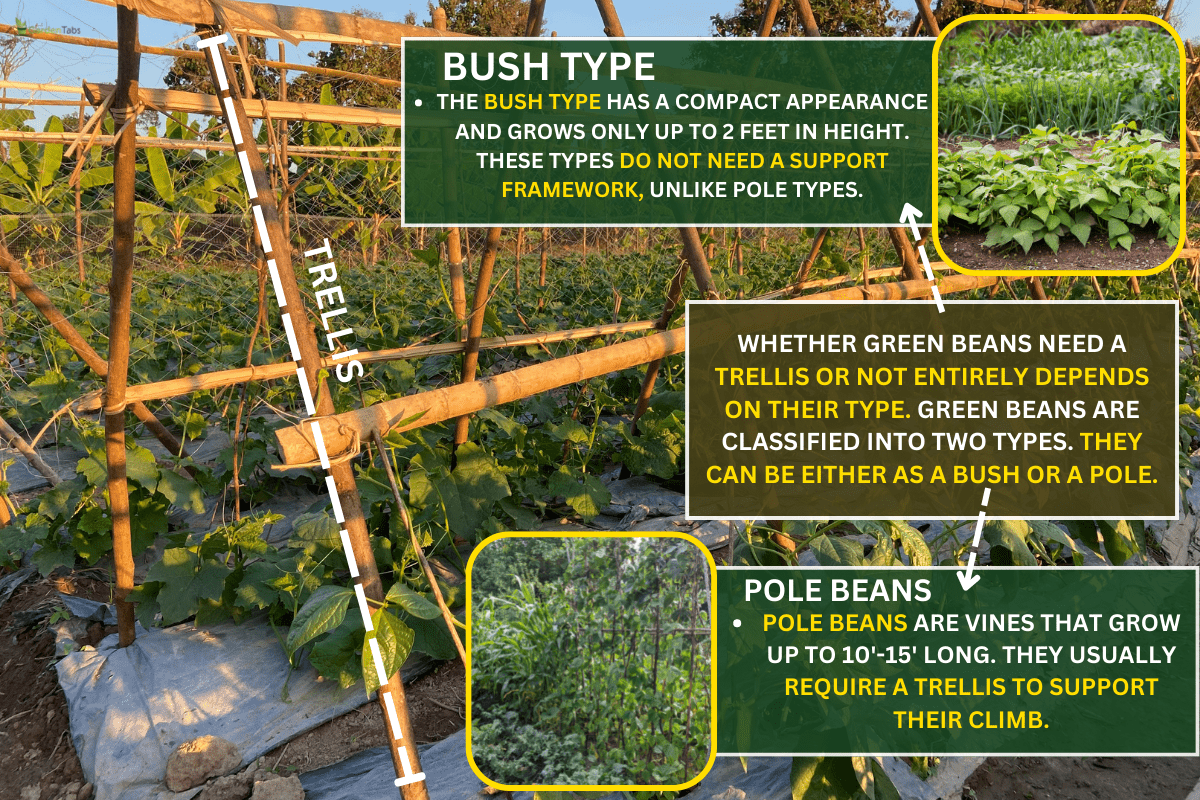
What Should You Use To Support Green Beans?
Determining if your green beans need support depends on their type. For bush types, no extra support framework is required.
But if you plan to grow these, you need to observe proper spacing, so they grow and become each other's support. Plant each seed an inch deep, 2"-4" apart, and with 1.5' to 2' between each row.
For pole beans, building its support is needed since it does not grow well in compact space.
The seeds need to be planted 1" into the ground 6" apart. Different support techniques include poles, bean plant teepees, trellis, cornstalks, and many more.
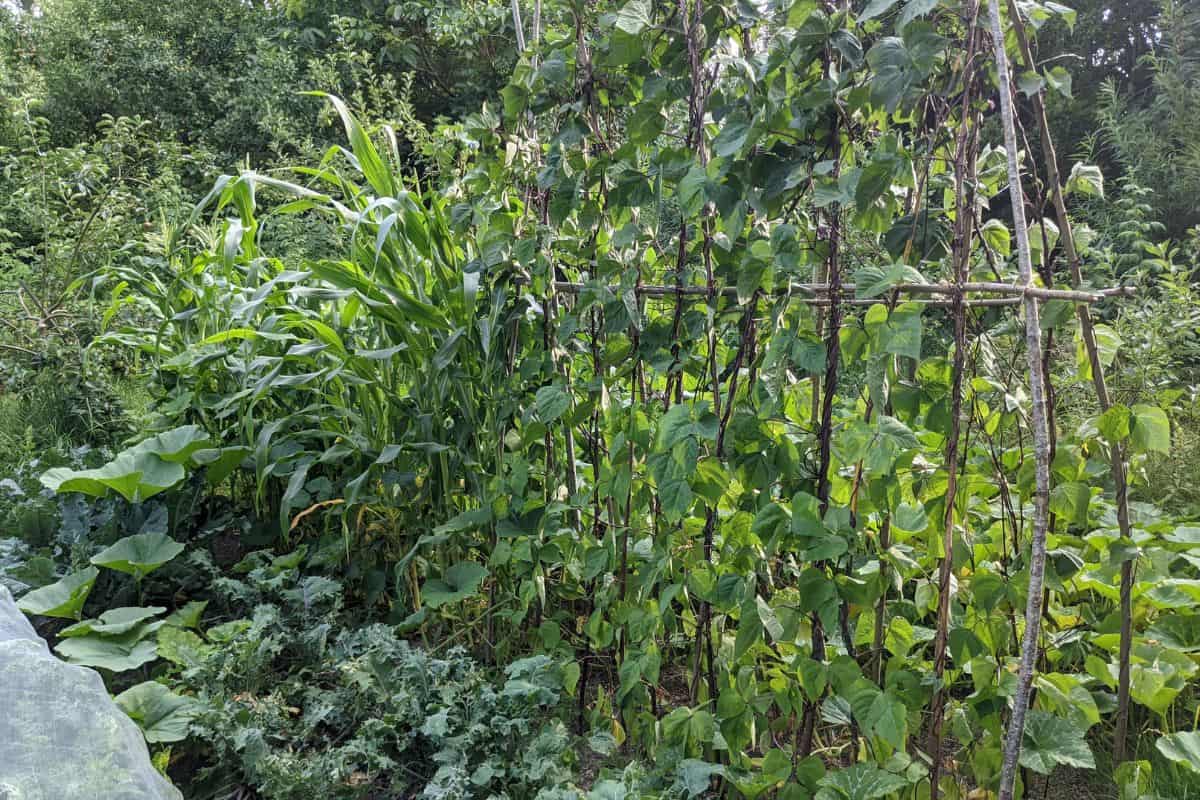
Pole
Pole beans derive their name from the traditional and simple method of staking poles that serve as their support. Erect the poles first before planting the seeds.
The poles are usually 2m - 2.5m tall and are preferably rough-skinned to allow the vines better grip.
Trellis
Another popular support framework for pole beans and other vines is the trellis. This fence-like support can be readily purchased at your local gardening store or handmade.
There are a wide variety of materials available for trellises, like wood, metal, and plastic. This structure is typically 1.5m - 2m high.
If you choose to use a trellis: How To Use A Trellis For Vertical Gardening
Bean Plant Teepee
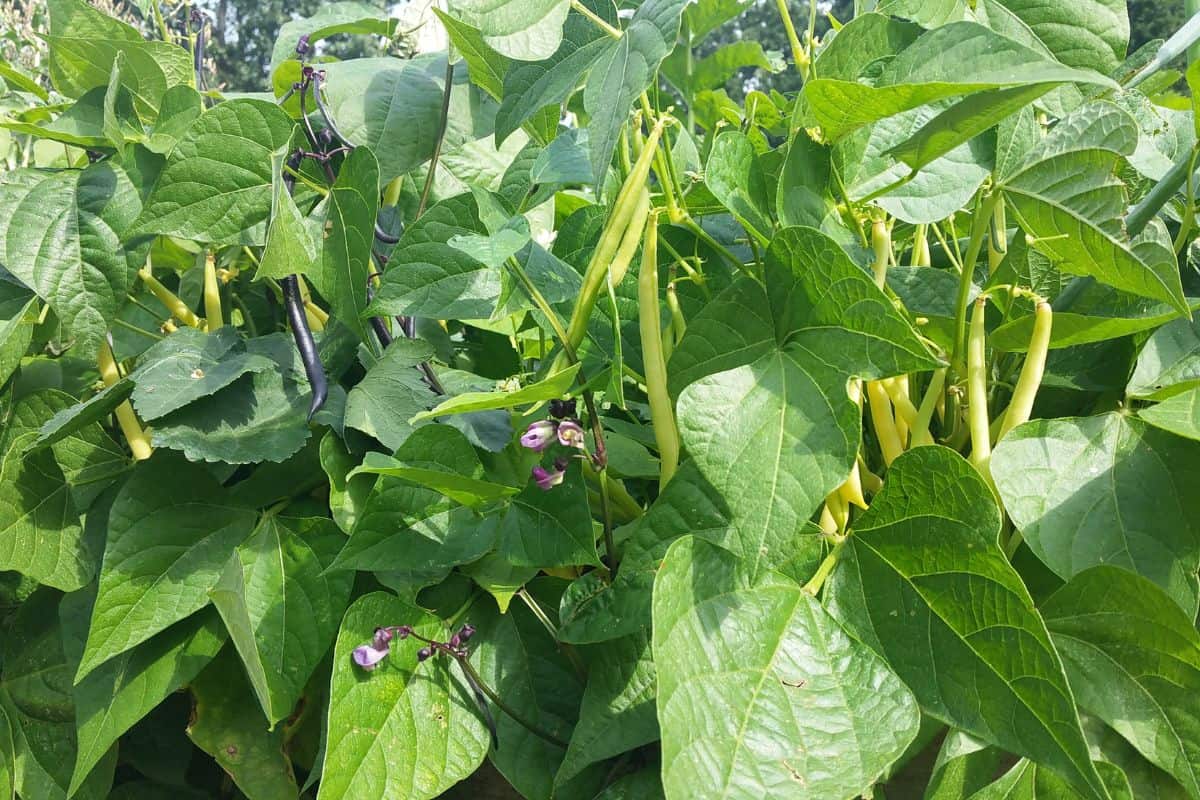
Building a plant teepee is another framework that uses long and thin supports.
You can use bamboo, PVC pipes, or aluminum poles to create a plant teepee. There is no recommended height for teepees, but you can have it as tall as a trellis.
To form a teepee, you must tie 6-10 poles together on one end. Burrow each pole at least 24" from each other. This needs to provide enough space for the bean leaves to grow.
Next, angle them so that their other end meets at the center. You can use a rope, string, or other similar material to bind the poles where they intersect.
Run one or two more string layers around the poles to make them sturdy.
Cornstalk
Cornstalks make an excellent trellis for bean vines to grow on. This practice is common to Native Americans and offers mutual benefits for both the bean plant and the corn.
Bean plants can convert and transfer nitrogen from the air into the soil, significantly benefiting corn.
In return, strong and healthy corn supports the growth of pole beans. However, the best cornstalk trellis comes from varieties that grow at least six ft. tall.
A-Frame
The A-frame trellis is a classic favorite of gardeners. A horizontal cane supports this easy-build frame on top, which bridges multiple ridges together.
It helps add a third leg at both ends of the frame for added anchorage for extra windy places.
This type of frame allows you to grow lots of beans in narrow beds and protects your crops from pests and birds. It also serves a dual purpose since the space beneath can serve as a planting area for cool-season crops.
V-Frame
Another frame type that is not as common is the V-frame. Here one end of 6 poles or canes that are 1.5m tall are tied to a frame that should provide at least a meter of clearance on top.
Space the poles out evenly from each other and plant one pole bean plant at each one's bottom.
This frame helps ensure the beans are exposed and easily spotted for picking. It also helps lessen foliage thickness, thereby facilitating improved airflow.
Lattice
A lattice is a large piece of patterned wood that usually comes in ready-to-install parts. Lattices are bulky and are made for a wide variety of uses. Its primary use, though, is for plant support.
You can set it up against a wall or as a stand-alone.
For free-standing lattices, you will need to erect frames on which that lattice can be anchored to. Space two 4" x 4" posts such that they can accommodate the lattice from end to end.
Also, make sure to use posts that are taller than your lattice. Using a hammer and nails, secure the lattice against the posts. Nail the lattice on both sides every 12".
If you plan to attach your lattice against the wall of your house, you will need two pieces of 2" x 2" posts of the same height as your lattice.
Screw these posts against the wall. Make sure their distance apart is the same as the width of the lattice. Place the lattice on top of the posts and nail them into place.
How To Build An Arch Trellis
Adding a trellis to your garden is a great way to add heights. You can use a cattle panel if you want a trellis guaranteed to last a long time.
This is a thick wire fence made from galvanized metal.
Although primarily used for fencing cattle in, it is also famous for gardening purposes. A good way to take your trellis up a notch is by creating an arch for your beans to grow.
This not only makes harvesting easier, but it also works as a garden attraction.
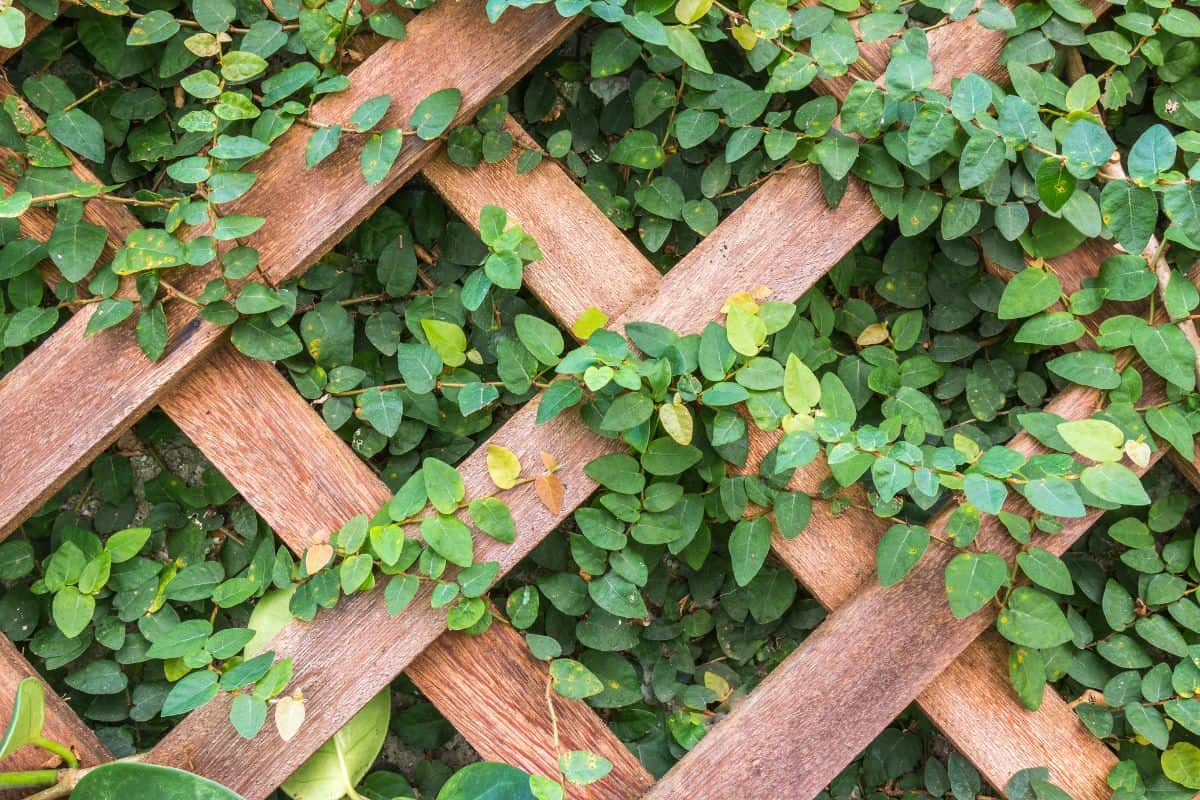
If you wish to build yourself a beautiful and heavy-duty archway trellis, here is how to do it:
1. Prepare your materials
For this project, you will need the following:
- Standard T-bar posts (6ft. long)
- Cattle panel - 16 ft. x 50" (HxW)
- Ratchet straps
- Plastic zip ties or electrical fence wire
- T-post driver or sledgehammer
- Tape measure
- Gloves
- Level
2. Select the site for your arch
Choose a location that can easily accommodate your arched structure. It needs enough space for an arch at least 5 feet apart.
We don't recommend going narrower than five ft. since this could cause your arch to bow on the sides.
For arches intended to accommodate pole beans, ensure your location receives a good amount of sunshine for at least 5 hours.
3. Determine your arch's orientation
Your cattle panel is made of galvanized steel rods welded together in a fence-like structure. Short vertical lines run interrupted on one side, and uninterrupted horizontal lines run on the other.
It would help if you decided which side you want facing out.
Also, if you're unsure how far you want each side to be from the other, you can use ratchet straps to help you visualize your arch at specific measurements. Take note that the wider the arch, the shorter its height.
4. Install your T-bar posts
With your ratchet straps kept in place, position your arch side up. Ratchet straps make keeping your arch in place easier than just pushing it on the sides.
Now you can install the T-posts at each corner of the arch.
Before hammering the posts in place, ensure the front and back ends of your arch are equally distanced using a tape measure. This also means that your arch is correctly aligned on the sides too.
Once proper alignment is ascertained, hammer the T-bar posts into the ground using a T-post driver. You can use a sledgehammer if you do not have a T-post driver.
Each post must be hammered with the same depth. Check each post with a level to make sure they are perfectly straight.
Remember that when hammering the posts down, you need to pull the arch away to avoid any dents on the panel. Another thing to remember is to install the T-bar posts with their notched side facing the cattle panel.
5. Tie the panel to the posts
To support the panel in place, push it against the T-posts and tie them in using plastic zip ties. You can also use other tying tools like electrical fence wire or T-post clips.
Tie the panel against the posts at six intersecting areas, although the number of ties would depend on the length of the post.
For a more thorough review, you can watch this video:
To Finish Up
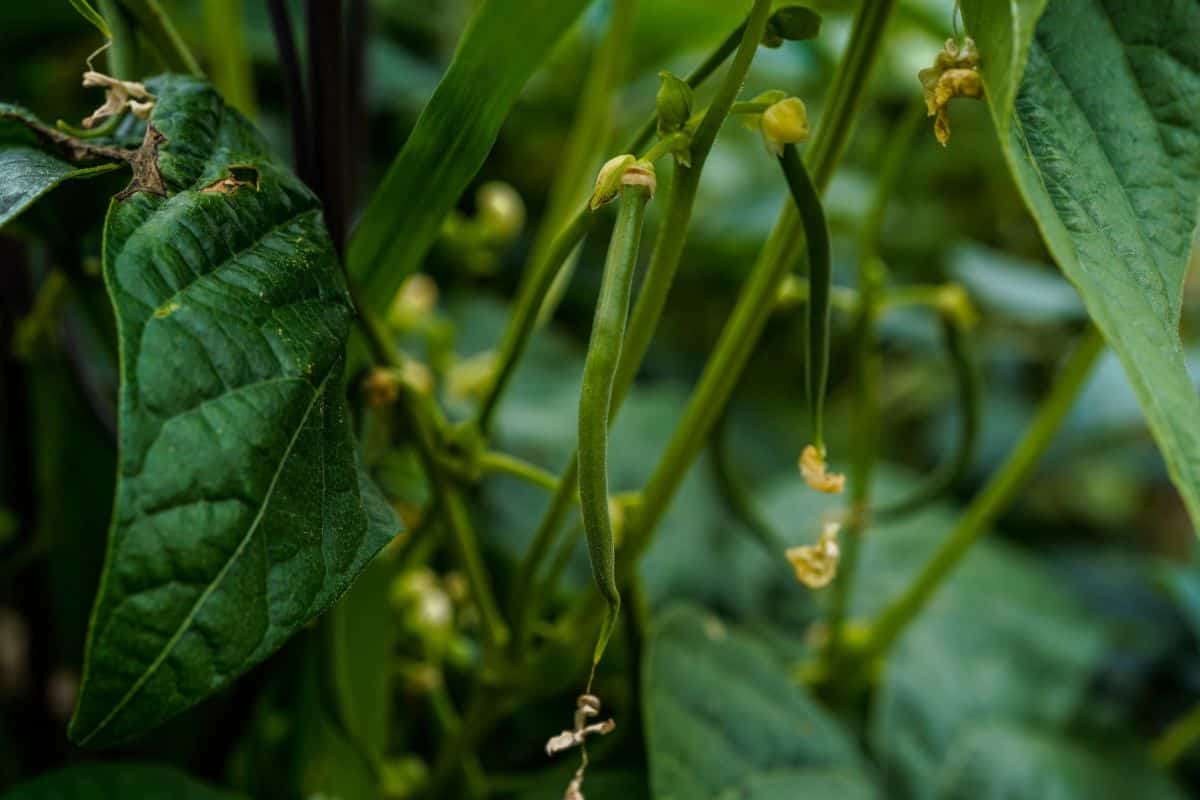
To sum up, your variety of green beans will determine whether it needs a trellis for support.
If you choose to cultivate pole beans, there are a lot of garden structures you can use to help them thrive. You can create your own garden arch using the provided DIY guide.
Made it to the end? Check out these related articles below:
